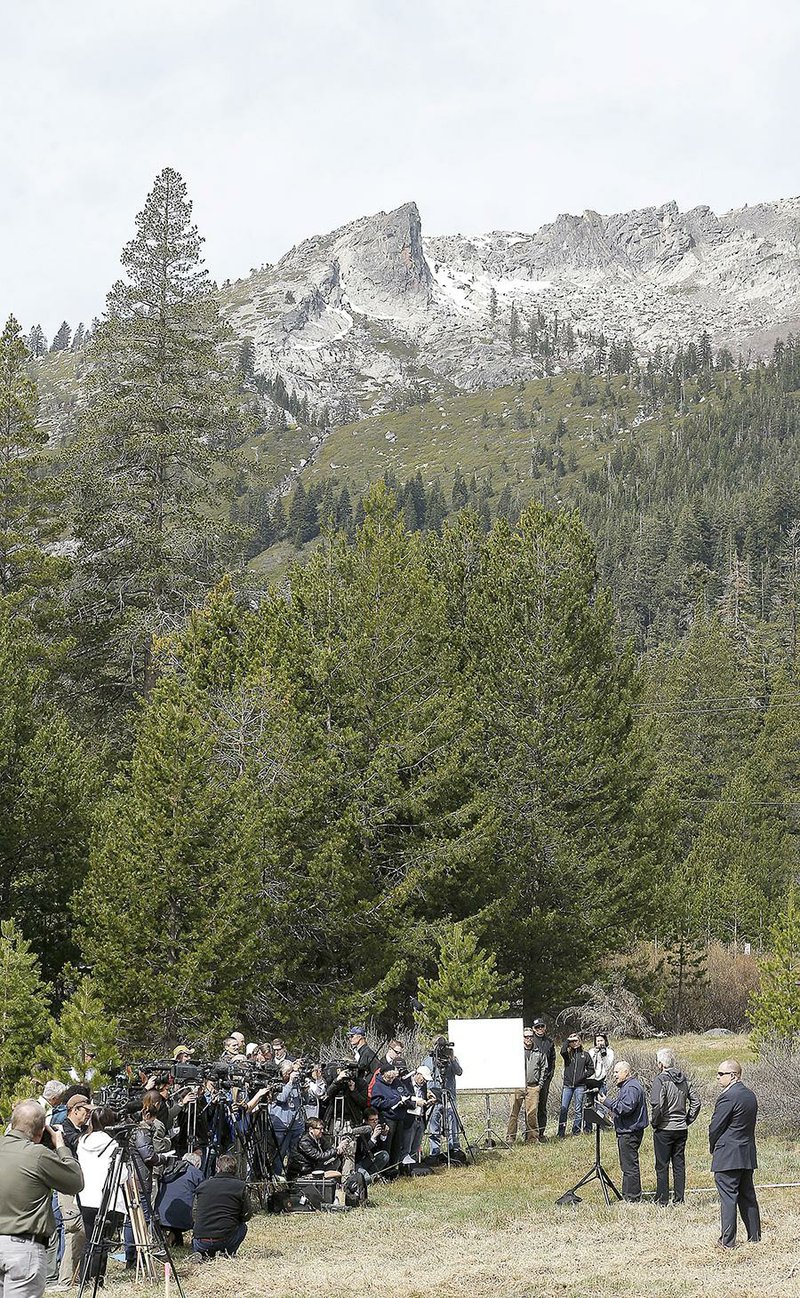California Gov. Jerry Brown announced strict new curbs on state water use Wednesday to combat a worsening drought affecting more than 50 million people in the western United States.
The executive order imposes mandatory water reductions across California, aimed at lowering usage by 25 percent.
Brown, a Democrat, announced the new restrictions on a mountain near Lake Tahoe, where state officials gathered to conduct an annual snowfall measure. The field where the measurement took place has averaged 66 inches of snow on April 1 since records began in 1950.
"Today we are standing on dry grass where there should be 5 feet of snow," Brown said Wednesday.
While the eastern United States weathered a colder-than-usual winter, a warm and dry winter west of the Rocky Mountains has state officials concerned that the years-long drought will worsen this summer. The drought has diminished urban water supplies, taxed state budgets and created an environment ripe for a disastrous fire season.
Near Tahoe, the ground is bare of snow.
"There's nothing up there," said Doug Carlson, a spokesman for the state Department of Water Resources, who drove to the site over the weekend. "You can't see snow in any direction from the snow course," where the measurement takes place.
The drought spreads across every Western state. Oregon and Washington have both recorded record-low snowpacks this year, and 33 percent of all Western land is experiencing severe, extreme or exceptional drought levels, including more than 93 percent of California, according to the National Oceanic and Atmospheric Administration.
More than 52 million people live in drought-affected areas, according to agency data.
California got at least some relief in December and February, when rainstorms swept through the state. But the situation is still bleak: Every river in California has recorded lower year-to-date precipitation levels than the historical average, according to data maintained by the state Water Resources Department.
Ordinarily, the state relies on snow runoff for about 30 percent of its water supply. This year, that runoff won't be there. Carlson said that leads state officials to conclude the drought will worsen.
State officials have had to cut back on the amount of water they allocate to farmers, cities and other users.
The State Water Project said last month that customers will get only 20 percent of the water they request, though that level is well above the 5 percent the agency allocated in 2014. Last month, officials also tightened drought regulations by limiting the number of days on which residents are allowed to water their lawns.
Legislators have taken steps to combat the drought, passing a $1 billion plan in March that provides food and water supplies to hard-hit communities in the Central Valley and spends hundreds of millions of dollars on flood control, desalination projects and water recycling.
Brown's new order -- the first-ever mandatory water reductions ordered by a California governor -- goes a step further.
The order will replace 50 million square feet of lawns on state and local government campuses with drought-tolerant landscaping; create a statewide consumer rebate to replace old appliances with energy- and water-efficient ones; and require big water users such as campuses, golf courses and cemeteries to make significant cuts in water use.
The order also imposes new enforcement mechanisms on big agricultural water users, who will be required to report usage to state regulators. New residential communities will be required to install water-efficient irrigation systems; those communities will be barred from watering ornamental grass on public street medians.
A Section on 04/02/2015
